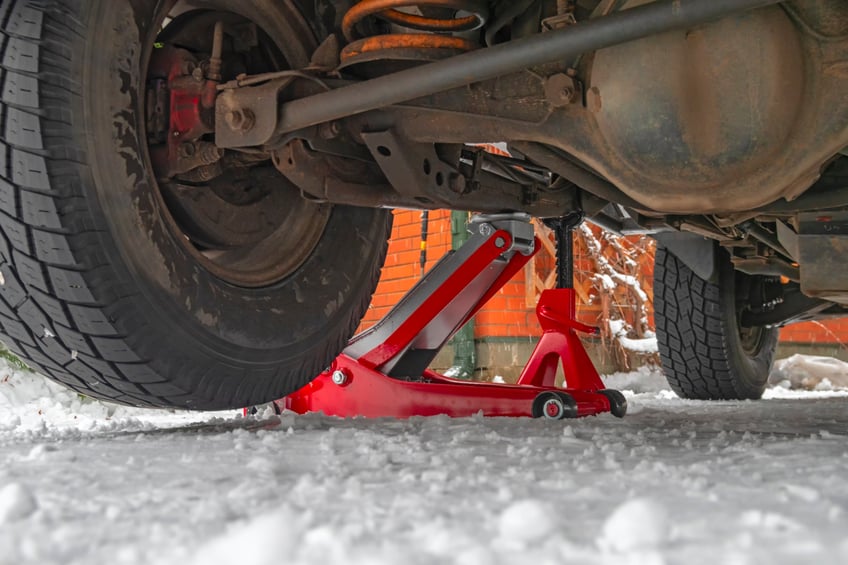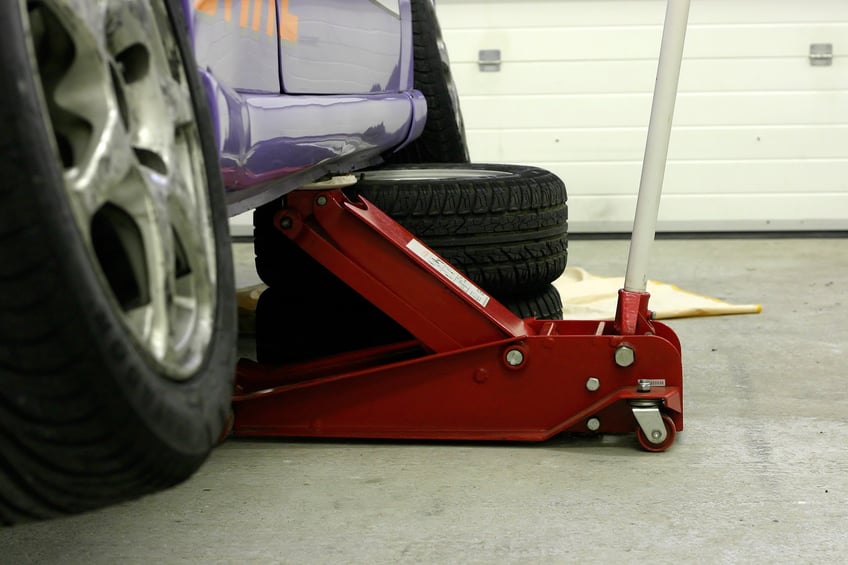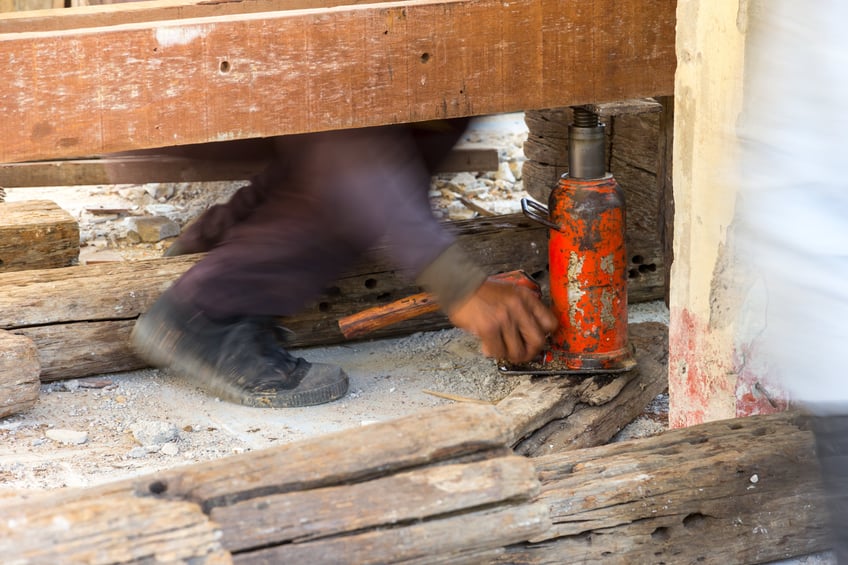The introduction of hydraulic jacks has streamlined a number of industries. It’s likely you’ve seen them being used to lift cars, and maybe you’ve even had a crack at using one yourself. But how far does your knowledge of hydraulic jacks extend? Hopefully, you're more experienced than the guy below.
Hire hydraulic jacks and lifting gear
Check out our comprehensive guide to hydraulic jacks and learn about the different types, how they work, and where they’re used!
How does a hydraulic jack work?
Hydraulic jacks differ from mechanic jacks as they’re usually able to lift heavier loads much higher. The primary mechanism with which force is applied is often through a hydraulic cylinder - the hydraulic jacks rely on pressure-generated force in order to lift up objects. Heavy objects are lifted by using plump plungers to move oil throughout the two cylinders. This results in pressure building within the cylinder.
Types of Hydraulic Jacks
Bottle Jacks
Also known as hand jacks, bottle jacks prove an easy way for individuals to lift a vehicle for roadside service or inspection. Bottle jacks widely range in size and lifting capabilities from 45 kilograms to several tonnes. Bottle jacks use a vertical shaft, which supports a bearing pad that directly holds the weight of the load as it’s lifted.Trolley/Floor Jacks
Trolley jacks, also known as floor jacks, are unlike bottle jacks which operate vertically. The shaft in a floor jack is horizontal - it pushes on a crank that connects to a lifting pad, which is then lifted vertically. These jacks provide a much greater range of vertical lift than bottle jacks and are available in two main sizes - small and large.
How to use a Hydraulic Jack
Although there is a range of trolley jacks available on the market, the basic principles of operation apply across the board. First, you remove the pressure in the jack and lower it completely. Ensure there is enough oil in the jack and that it’s working properly, then safely place it under the load and pump until it raises. Check out specific instructions on how to use each hydraulic jack below!
How to use a small Hydraulic Trolley Jack

Step 1
For smaller-sized jacks, begin by opening the release valve and lowering the jack completely.Step 2
Then, take off the black cover plate on the top of the jack to get to the hydraulic ram. Underneath the cover plate and on top of the ram you’ll see a small rubber grommet. That is the oil filler plug.Step 3
While you have the release valve still open, pump the jack handle several times rapidly.Step 4
Then, slowly pinch the oil filler plug to release the trapped air. There may be an audible hiss as the air escapes - make sure you do not completely remove the plug.Step 5
Shut the release valve and check the jack for correct operation. The air purge process may need to be repeated a few times in some cases to achieve the best results.Step 6
To refill the jack, simply remove the oil filler plug and fill it up with hydraulic jack oil.
How to use a large Hydraulic Trolley Jack

Step 1
Twist the handle to fully open the release valve and lower the jack.Step 2
Pump the jack multiple times while the release valve is still open, then leave the jack handle in the downwards position.Step 3
Find the screw-in fuller plug on the oil chamber and loosen it just enough to allow air to escape.Step 4
Tighten the filler plug and double-check the jack for proper operation. The air purge process may need to be repeated for maximum efficiency.Step 5
The filler plug can be removed to top up or replace oil as needed.
How to use a Bottle Jack
Step 1 - Bottle Jack
Purging air from a bottle jack is very similar to the process small trolley jacks use. Begin by loosening the release valve, and pumping the handle a couple of times.Step 2 - Bottle Jack
Next, tip the bottle jack over so the oil fill plug is facing directly upwards and the unit is level.Step 3 - Bottle Jack
Slide the oil fill plug sideways with a flat screwdriver to allow air to escape. Be careful you don’t damage the plug doing so - as with all hydraulic jacks, you may need to repeat this process for the best results.Step 4 - Bottle Jack
If you need to add oil to the bottle jack, make sure you completely remove the fill plug and fill the jack until the oil is level with the filler plug hole when the jack is upright.
Subscribe to iseekplant’s Constructionsht blog for the latest industry, project, and DIY news!



